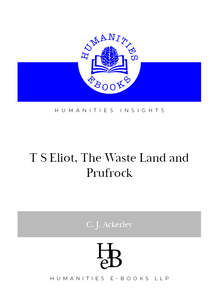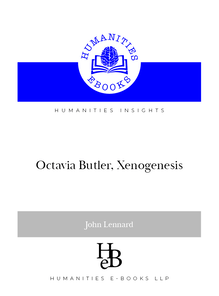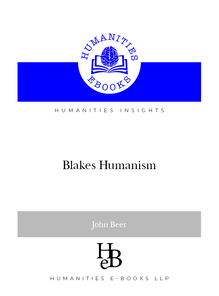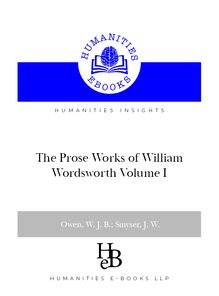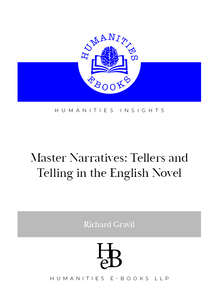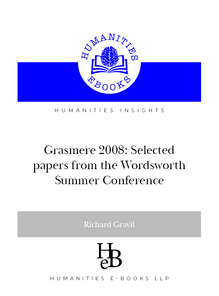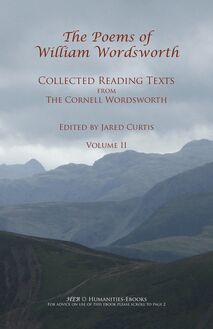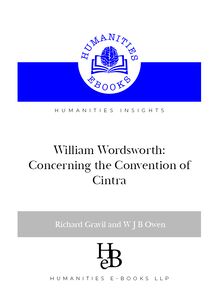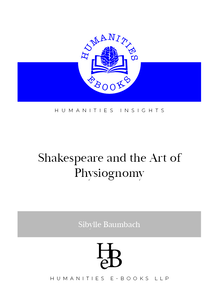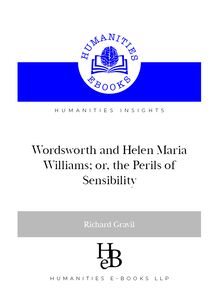-
 Univers
Univers
-
 Ebooks
Ebooks
-
 Livres audio
Livres audio
-
 Presse
Presse
-
 Podcasts
Podcasts
-
 BD
BD
-
 Documents
Documents
-
- Cours
- Révisions
- Ressources pédagogiques
- Sciences de l’éducation
- Manuels scolaires
- Langues
- Travaux de classe
- Annales de BEP
- Etudes supérieures
- Maternelle et primaire
- Fiches de lecture
- Orientation scolaire
- Méthodologie
- Corrigés de devoir
- Annales d’examens et concours
- Annales du bac
- Annales du brevet
- Rapports de stage
La lecture à portée de main
272 pages
English
Découvre YouScribe en t'inscrivant gratuitement
Je m'inscrisMaster Narratives: Tellers and Telling in the English Novel , livre ebook
Découvre YouScribe en t'inscrivant gratuitement
Je m'inscris
Obtenez un accès à la bibliothèque pour le consulter en ligne
En savoir plus
En savoir plus
272 pages
English
Obtenez un accès à la bibliothèque pour le consulter en ligne
En savoir plus
En savoir plus

Description
A Collection of Essays exploring the way in which some of the major novels in the 'long' nineteenth century engaged with society's 'master narratives'.
Sujets
Informations
| Publié par | Humanities eBooks |
| Date de parution | 11 janvier 2021 |
| Nombre de lectures | 0 |
| EAN13 | 9781847600073 |
| Langue | English |
| Poids de l'ouvrage | 2 Mo |
Informations légales : prix de location à la page 0,0500€. Cette information est donnée uniquement à titre indicatif conformément à la législation en vigueur.
Extrait
MasterNarrativestellersaNdtelliNgiNtheeNglishNovel
eSSàYS fOR BILL rUDDIcKNewlydigitizedByhuMaNities-eBooks
gERàRD BàRRETT FREDERIcK BURWIcK rIcHàRD gRàVIL w. B. hUTcHInGS JàYnE lEWIS MIcHàEL o’NEILL aLàn sHELSTOn JànE sTàbLER NIcOLà tROTT MàRY wEDD
eDITED bY rIcHàRD gRàVIL
PublicationData
© RIChàrd GràvIL, 2001, 2007
The editor has asserted his right to be identiîed as the author of this Work in accord-àNCE wITh ThE cOpyrIghT, DESIgNS àNd PàTENTS aCT 1988.
First edition published in 2001 by Ashgate Publishing Limited, Aldershot and Ver-mont.
Second electronic edition published in 2007 by Humanities-Ebooks LLPTirril Hall, Tirril, Penrith CA10 2JE. This edition is sold in aid of Oxfam.
ReaDinGoPtions
*To use the navigation tools, the search facility, and other features of the Adobe toolbar, this Ebook should be read in default view. *To navigate through the contents use the hyperlinked ‘Bookmarks’ at the left of ThE SCrEEN. *To search, expand the search column at the right of the screen or click on the binocular symbol in the toolbar. *For ease of reading, use <CTRL+L> to enlarge the page to full screen *Use <Esc> to return to the full menu.
licenceanDPeRmissions
This book is licensed for a particular computer or computers. The île itself may be copied, but the copy will not open until the new user obtains a licence from the Hu-manities-Ebooks website in the usual manner. The original purchaser may license the same work for a second computer by applying to support@humanities-ebooks.co.ukwith proof of purchase. Permissions: it is permissible to print sections of the book (in draft mode) for your own use, but not to copy and paste text.
isbn 978-1-84760-007-3
Master Narratives
Tellers and Telling in the English Novel
Edited by Richard Gravil
In Memory of
Bill Ruddick 1939 – 1994
scholar, teacher, friend
Contents
1Richard Gravil – Introduction (7)
2
3
W. B. Hutchings – How pleasant to meet Mr Fielding: The Narrator as Hero inTom Jones(18)
Jayne Lewis – ‘Where then lies the difference?’: The (Ante) Postmodernity ofTristram Shandy(33)
4 Mary Wedd –Old Mortality: Editor and Narrator (55)*
5Frederick Burwick –Mathilda– Who Knew Too Much (69)
6Jane Stabler – ‘Perswasion’ inPersuasion (82)
7Frederick Burwick –Wuthering Heights(101)as Bifurcated Novel
8Richard Gravil – NegotiatingMary Barton(126)
9
Alan Shelston – Nell, Alice and Lizzie: Three Sisters amidst the Grotesque (148)
10 Richard Gravil – The Androgyny ofBleak House(174)
11 Nicola Trott –Middlemarch(198)and ‘the Home Epic’
12 Gerard Barrett – The Ghost of Doubt: Writing, Speech and Language INLord Jim(233)
13 Michael O’Neill – Liking or Disliking: Woolf, Conrad, Lawrence (249)
Search Terms
* not available as a separate essay
Illustrations
FOrThe Old Curiosity Shopthe titles are those allocated in Thomas Hatton’s list of illustrations to the works of Charles Dickens inNonesuch Dickensiana(1937).
1 Nell in bed. S. Williams
2Nell among the tombs. George Cattermole
3George CattermoleNell dead.
4George CattermoleThe shop.
5Mrs Quilp’s tea-party. Hablot Knight Browne
6Quilp’s corpse. Hablot Knight Browne
7Nell and the Sexton. Daniel Maclise
8John TennielAlice with the creatures.
9The Duchess with the baby. John Tenniel
10 Alice and the Queen of Hearts. John Tenniel
11John TennielAlice and the White Knight.
12 Alice in the shop. John Tenniel
13 Little Dorrit’s Party. Hablot Knight Browne (original title)
14 The Bird of Prey. Marcus Stone (original title)
15 Waiting for Father. Marcus Stone (original title)
16 Mr Venus surrounded by the trophies of his art. Marcus Stone (original title)
17 Alice in the drawing room. John Tenniel
Chapter 1
Introduction: Master Narratives
Richard Gravil
The essays in this volume have been composed in memory of the late Bill Ruddick, a notable scholar and teacher, an inveterate reader and reviewer of nineteenth-century îction, and, for most of the contributors, a close and beloved friend. The authors engage with a selection of literal ‘master narratives’, texts which in one way or another represent growth points in the development of the novel. All of the essays explore what Fredric Jameson called the ‘objective’ structures of particular texts: ‘the historicity of its forms and of its content, the historical moment of emergence of its linguistic possibilities, the situation-speciîc function of its aesthetic’. Most of them reect, also, on the function of such texts as what Jameson called ‘symbolic move[s] in an essentially polemic and strategic ideological confrontation’ with one or other of society’s 1 ‘master narratives’. What makes some novels more indispensable than others, and what mysterious process determines their inclusion in a teaching canon? According to Terry Eagleton, ‘Literature is a vital instrument for the insertion of individuals into the perceptual and symbolic forms of the dominant ideological formation’. In this somewhat monolithic view, ‘Ideology adapts individuals to their social function by providing them with an imaginary model of the whole, suitably 2 schematized and îctionalized for their purposes.’This loosely Althusserian
1. Fredric Jameson,The Political Unconscious: Narrative as a Socially Symbolic Act(Ithaca NY: Cornell University Press, 1981) 9, 85. 2. Terry Eagleton,Criticism and Ideology(New York: New Left Books, 1976), 52, 151.
Master Narratives 8
notion became so commonplace in the late 1970s and 1980s as to constitute a virtual critical hegemony today. Macdonald Daly, for example, tells readers ofMary Bartonthat the novel is canonized because it is crucial to ‘the self-3 renewing programme of the bourgeois intelligentsia’. Students are often taught, and sometimes believe, that novels, especially canonical novels, simply reect whatever cultural historians take to be the dominant cultural formations of the writer’s epoch. Dickens wrote in an era of patriarchy: his novels, therefore, are interesting primarily as evidence of the pervasiveness of ‘domestic ideology’; the use of his îction, if any, is to provide examples of the pastness of the past. Yet, as Raymond Williams insisted, the making of art is ‘always a formative process’, involving a tension between what is thought and what is being lived: what is ‘perceived’ and ‘dominant’ is already past (to Blake and Nietzsche one’s thoughts are already merely the bones of thought) but the novel belongs to the present. The novel exhibits tensions between what is felt and what is merely thought, between the objective and the personal, between what is ‘believed’ and what is ‘experienced’; its proper realm, then, 4 is the ‘emergent’. Mikhail Bakhtin’s most characteristic proposition, the basis of his (debatable) claim for the primacy of the novel over other genres, is that the form includes dissenting voices and dramatizes îssures in what may appear a monolithic ideological formation: ‘The novel comes into contact with the spontaneity of the inconclusive present .... The Novelist is drawn towards 5 everything that is not yet completed’. So the premises, even of what might be considered an ideologically cohesive body of criticism, can generate fundamentally opposed views of what makes novels, and what drives canon-formation. A conservative model of canon-formation suspects the novel, especially the realist novel, of serving the dominant structures of value in the bourgeois state; a radical model might see the canon as constituted by those novels which have most successfully,
3. Introduction,Mary Barton(Harmondsworth: Penguin Books, 1996), xix. 4. Raymond Williams,Marxism and LiteratureOxford University Press, (Oxford: 1997), 129, 123. 5.The Dialogic Imagination: Four Essays by M. M. Bakhtin,Michael Holquist ed. (Austin TX: University of Texas Press, 1981), 27.
Master Narratives
if not always coherently, expressed an emergent consciousness, challenged most effectively the received social codes, created space for new structures of feeling. In the essays that follow, each writer has kept one eye, implicitly or explicitly, on this question, while focusing on the claims of the particular novel to have contributed something unique to our sense of what îction can do; to have brought some new îctional element into being, mastered some facet of the art of telling. Bill Hutchings, in ‘How pleasant to meet Mr Fielding’, takes up the vexatious business of the novel as history and the novelist as historian, a self-conscious model of writing that was playfully taken up by Sterne, Scott and George Eliot. For a Modernist such as Ford Madox Ford, as Hutchings points out, what is aesthetically desirable is to convey as immediately as possible (that is, without consciousness of any medium) the actuality of a scene or a character. ‘All authorial intrusion should ideally be avoided, the scene being directly presented to readers as if they were themselves witnessing it’. Precisely this business of ‘witnessing’, however, is what Fielding as a professional lawyer is concerned with, and the illusions of realism, much contested in postmodern writing and by such a realist as George Eliot, are already suspect to Fielding. His narrator must, therefore, be overtly present and available for inspection. Fielding’s age was occupied with the concept of objectivity. ‘Objectivity is the result of a communal act of observa-tion, a pooling of our perceptions towards a series of general truths.’ Thus,Tom Jonesforegrounds the inevitable subjectivity of any particular narrator, the problematics of objectivity. Fielding uses the judicial system ‘as a running metaphor for how we judge human actions and motivation’. Jayne Lewis’s essay on ‘The (Ante)Postmodernity ofTristram Shandy’ explores what might be termed the wormhole theory of îction, exempliîed byTristram Shandy even more than byRoderick Random orTom Jones, whereby it and a work like Barth’sThe Sotweed Factormight appear to be contemporaries. Certainly, his novel seems to have much more in common with Proust, Woolf and Joyce than with Fielding, Richardson or Smollett. Its narrative technique, ‘spun of interruption, digression, and all species of textual chasm’, can make one feel that ‘the English novel was postmodern even before it was modern’. Lewis’s chapter acknowledges thatTristram
Master Narratives 10
Shandygestures ‘toward an atemporal dimension in the history of narrative’, but its searching analysis of several aspects of Sterne’s narrative technique shows that whateverTristram Shandy’s lack ofintrinsicdifference from certain modern and postmodern novels, it exhibits profoundsituationaldifferences from them. Ironically, Professor Lewis argues, some of the qualities that seem to make it timeless stem, when historically considered, from certain very eighteenth-century dispositions, for instance the period’s neo-epicureanism and its ‘sensibility’. Historical îction may have become academically marginalized, but the form Scott perfected has been the staple genre for a long tradition of cultural analysts, from James Fenimore Cooper to J. G. Farrell, concerned with the conict of cultures and the birth of nations. The particular instance that Mary Wedd examines carries much scholarly baggage, of a kind that may at îrst appear remote from the matter at hand. Yet her ‘Old Mortality: editor and narrator’ shows how Scott’s editorial apparatus, with its presumption of scholarly and historical documentation, and antiquarian addenda, ironic-ally undercuts the ‘authority’ of the narrative itself. Jedediah Cleishbotham, who introduces himself as editor of the ‘tales of my Landlord’ insists that he is ‘not the writer, redacter or compiler’, nor in any way ‘answerable for the contents’. Peter Pattieson, the school teacher who has collected the accounts of ‘Old Mortality’, died before he could assemble them in publishable form. Not the landlord, nor the schoolteacher, nor Cleishbotham (whose initials mark many of the footnotes) is responsible for the narrative. Scott may not be much reputed as an ironist, but Mary Wedd’s essay shows how this plurality of ‘authorities’ relates intimately to the ubiquitous ironies ofOld Mortality. At the heart of the novel is a problem that has not become any less relevant in our times: that of the barbarous pursuit of rival ‘goods’, or as Mary Wedd puts it, ‘idealism yoked to atrocity’. As narrative device, Mary Shelley typically gives her central character an opportunity to study the literary tradition in which she has placed him or her. The creature inFrankensteinacquires an education in readingParadise LostandWerther. The action ofThe Last Manis suspended so that attention can be given to Defoe’sJournal of the Plague Year. Frederick Burwick’s îrst essay in this collection, on ‘Mathilda– Who Knew Too Much’, shows
-
 Univers
Univers
-
 Ebooks
Ebooks
-
 Livres audio
Livres audio
-
 Presse
Presse
-
 Podcasts
Podcasts
-
 BD
BD
-
 Documents
Documents
-
Jeunesse
-
Littérature
-
Ressources professionnelles
-
Santé et bien-être
-
Savoirs
-
Education
-
Loisirs et hobbies
-
Art, musique et cinéma
-
Actualité et débat de société
-
Jeunesse
-
Littérature
-
Ressources professionnelles
-
Santé et bien-être
-
Savoirs
-
Education
-
Loisirs et hobbies
-
Art, musique et cinéma
-
Actualité et débat de société
-
Actualités
-
Lifestyle
-
Presse jeunesse
-
Presse professionnelle
-
Pratique
-
Presse sportive
-
Presse internationale
-
Culture & Médias
-
Action et Aventures
-
Science-fiction et Fantasy
-
Société
-
Jeunesse
-
Littérature
-
Ressources professionnelles
-
Santé et bien-être
-
Savoirs
-
Education
-
Loisirs et hobbies
-
Art, musique et cinéma
-
Actualité et débat de société
- Cours
- Révisions
- Ressources pédagogiques
- Sciences de l’éducation
- Manuels scolaires
- Langues
- Travaux de classe
- Annales de BEP
- Etudes supérieures
- Maternelle et primaire
- Fiches de lecture
- Orientation scolaire
- Méthodologie
- Corrigés de devoir
- Annales d’examens et concours
- Annales du bac
- Annales du brevet
- Rapports de stage
Signaler un problème
YouScribe
Le catalogue
Le service
© 2010-2024 YouScribe
